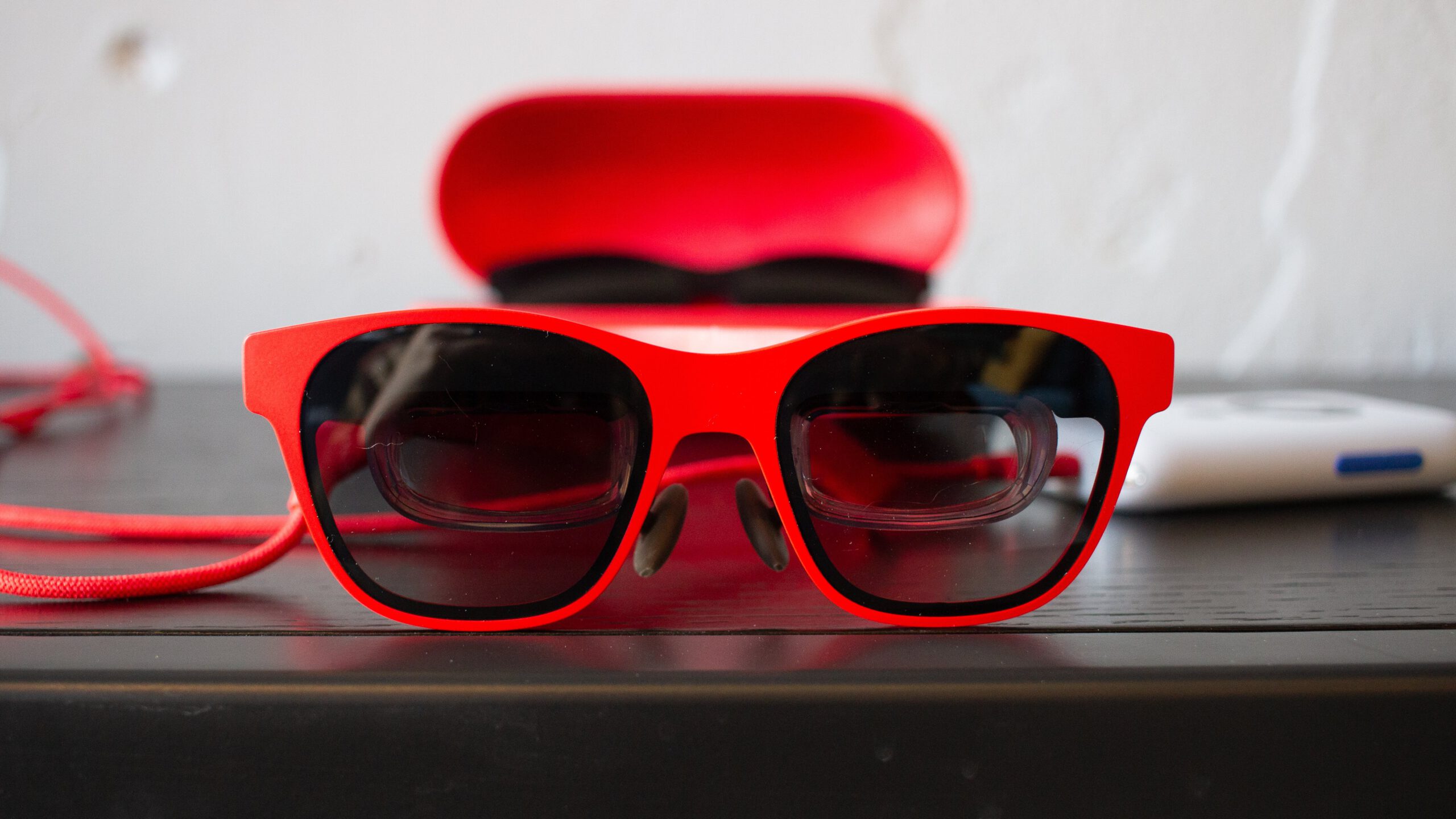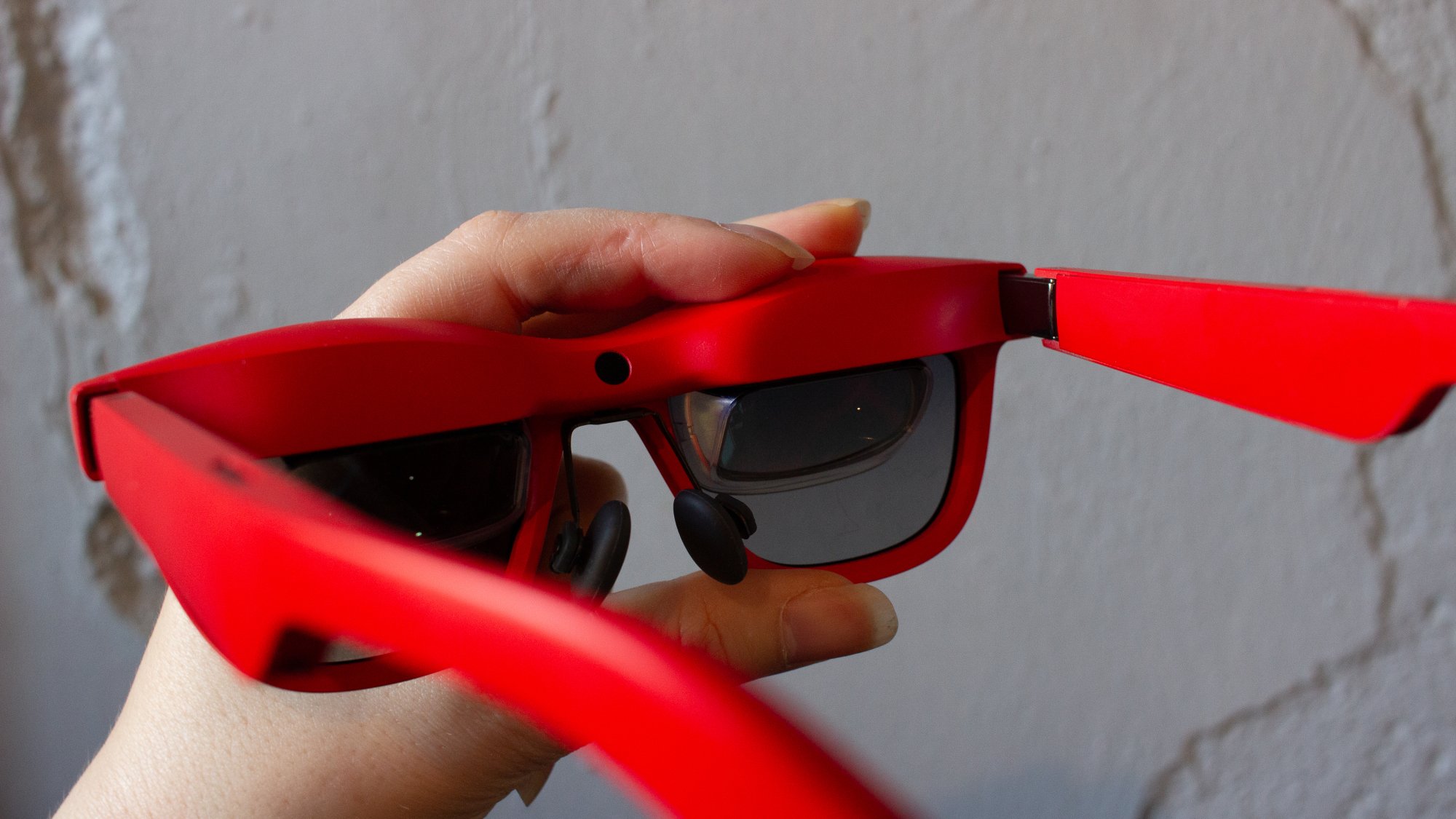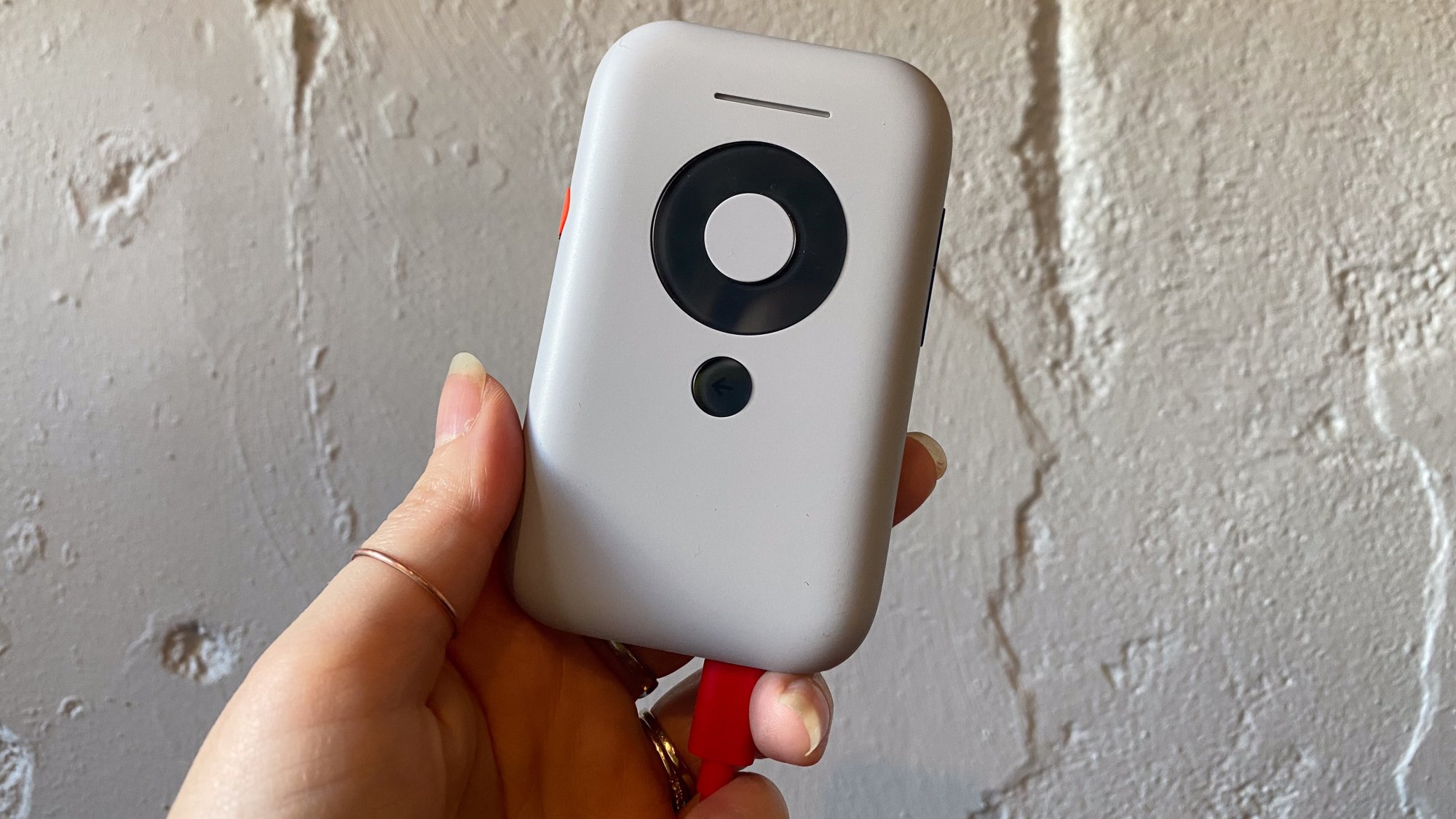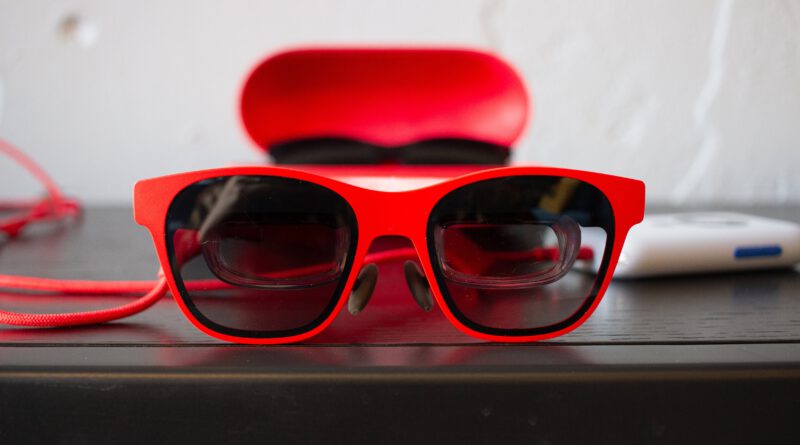The XREAL Air 2 smart glasses are a huge improvement from the original model

When I first heard about the XREAL (formerly Nreal) Air AR glasses, I knew I couldn’t wait to get my hands on them. They looked like the perfect blend of cool, futuristic, and functional, but – while there were parts of the original Air glasses that I loved — I was disappointed that I couldn’t give them a glowing review. They had potential, yes, but they had a few major hiccups that needed to be fixed…which is why I was thrilled to hear that the new XREAL Air 2 glasses were on the way. And when I got asked to try them out for myself to see how they held up to the originals? Excited is an understatement. (XREAL also released the new Air 2 Pro glasses, but we have not tested those.)
It’s been almost a year since I tried the original Air glasses, so I’ve had some time to think about what I’d love to see next from XREAL. From cosmetic to software upgrades, the updated Air 2 glasses promised to solve quite a few of my problems with the device — so much so that it felt like the developers read (and listened to) my original review.
First Impressions of the XREAL Air 2 glasses
I actually remember opening the original Air glasses, and the experience didn’t disappoint then and it still doesn’t now. The packaging is high-quality, and the XREAL Air 2 came with an updated hard case, cleaning cloth, a USB-C charging cable, a set of replacement nose pads, and an improved light-blocking shield that clips to the front of the glasses when you want to really immerse yourself in the experience. Plus, the all-new matte red model was striking and fun, but if you’re a little more conservative with your gadgets, they still have the understated dark grey available.
Straight out of the box, the new Air 2 glasses look and feel amazing. They’re pretty comparable to the original Air glasses in form and weight, but a few noticeable upgrades stood out. They’re definitely lighter weight than the original Air, and XREAL gave the nose pad and temples much-needed upgrades, which give the Air 2 glasses a surprisingly significant comfort boost.
I also ordered some custom prescription lenses to use with the original Air glasses, and I was happy to discover that I could clip them into the Air 2 glasses without any issues.

Comparing the XREAL Air vs. Air 2 glasses
Obviously, comfort was an immediately noticeable improvement when it comes to the new XREAL Air 2 glasses compared to its predecessor. While I was never upset with the original Air glasses’ weight, I did find them uncomfortable for longer wear sessions but the wearing experience on the Air 2 is significantly better. They’re more comfortable and more flexible, and I was pleased to discover I could wear the Air 2 glasses for long periods of time without any discomfort at all whereas the original Airs would dig into my nose and behind my ear after some time. This was a huge improvement in my book, and I was happy that XREAL paid attention to those small details.
As far as the screens themselves, they looked pretty much identical to me — which is fine, as the original Air screen was great. The specs list the Air 2 as having a brighter screen overall, but it wasn’t noticeable to me nor was it super important. From there, the difference between the original Air glasses and the Air 2 is a bit more stark — and more exciting. The color accuracy on these glasses is so much better than the first generation that it’s not even a fair comparison. It’s immediately apparent, especially in dark environments, that the Air 2 is a more accurate, better-calibrated monitor. No more over-saturation or disappearing darks; these wearable glasses boast a balanced, full-spectrum experience that is much better than XREAL’s first attempt.
Plus, at some point between my original review and now, they’ve finally solved 3D videos, which was one of my big complaints with the original Air glasses. It took a little elbow grease (and technical know-how), but instead of behaving like a 1920 x 1080 screen that is sent to each lens, the Air 2 will present itself as a 3840 x 1080 monitor — with each lens behaving as half the screen — making it possible to watch side-by-side video files in full 3D.
The built-in audio is incredible and full-bodied, but the addition of “directional audio” to reduce audio leakage didn’t really seem to make a difference. If you’re looking for a more private listening experience, I still recommend going with headphones or earbuds, either of which can be used comfortably in tandem with the Air 2.
The best part of the Air 2 glasses is, unfortunately, sold separately
If we’re going to talk about the biggest — and most important — upgrades that happen between the Air and the Air 2 glasses, a bulk of the improvement actually takes place via a separate product: the XREAL Beam, retailing for $ 119.
The best way I can describe the Beam is a tiny little AR-in-a-box machine, and it’s the device that transforms the Air 2 into a full augmented reality experience. It has a tiny little directional pad that serves as a pointer/remote, which is a little clunky, but the AR experience is worth it.

It’s hard to describe without experiencing it firsthand, but when you’re using the Beam, any device that outputs video via USB-C gets turned into a virtual screen in a real space in your room. And — unlike the original Air glasses — it stays there. You can turn away from the screen and back to it, or you can make it small and out of the way. Compare that to the original Air experience, where your screen follows you wherever you look, this is a much smoother, more robust, and way more satisfying AR experience.
While I was disappointed that it was a separate device, it honestly makes sense, and it solves a lot of the problems I had with the original Air glasses’ AR experience. I used it to keep a recipe up on my glasses while I’m cooking (out of the way, of course), watch YouTube videos when I’m doing laundry, or even watch movies or play video games on a massive virtual screen in front of my stationary bike while I’m exercising.
Even better? The Beam can act as a wireless monitor for my smartphone, meaning no more having to choose between charging your phone and watching videos — another major upgrade from the original Air glasses.
But that’s not all the Beam can do, and this is where I start getting a little too excited. The Beam is a new class of smart device all its own. You don’t even need a phone or another device. It runs Android, so you can install a lot of Android apps directly onto the Beam itself. Granted, the experience here is a little clumsy — and I hope XREAL improves it in the future — but because they have committed to a smart device, this opens up an entire world of possibilities for the AR marketplace.
The 3D apps aren’t there yet, and I’d want to see them iterate on both the hardware and the software, but if XREAL can foster a community of excited developers, then they’ll cement their foothold in the AR space before Meta or Samsung eventually move in and set up shop. Done right, they’ll essentially set the bar by which other AR products are compared.
What I’d love to see from XREAL in the future
While this has less to do with the Air 2 glasses themselves, there’s one thing I’d love to see from XREAL that I think would make the overall experience with these glasses a million times better: a marketplace with usable 3D apps.
Yes, I can install 2D apps and run them in 3D, but XREAL is so close to a rich, functional 3D/AR experience that I can taste it. The Airs have been on the marketplace for long enough that there should be a marketplace of existing XREAL apps that really utilize the 3D space — but it just doesn’t exist.
Another item on my wishlist? Ship a browser with the Beam (or at least un-hide the one that’s already installed). It’s wild that you have to plug it into a computer via USB and run some file-transfer software to sideload Android apps. It would be great for users to have access to an app store, but I understand XREAL not wanting to get into all that, so just let users download apps onto the Beam directly.
As for the Air 2 glasses themselves, and admittedly way down the bottom of my priority list? A wider field of view would be nice.
Are the XREAL Air 2 glasses worth it?
I gotta say, I’m really happy with the improvements XREAL has made over their original outing. I levied a lot of criticism at the first iteration of the Air glasses, and they’ve addressed every single issue I pointed out — and then some — which is hugely impressive. The company has proven that it rises to challenges, which is rare when you’re dealing with a relatively new technology in a market that doesn’t have much competition (yet).
That being said, do I think the Air 2 is worth the splurge? While these glasses are a little pricey at $ 399, it’s a resounding “yes” from me. The Air 2 is a polished product in its own right, and – as a flat external monitor for watching movies, working on a plane (one of my favorite use cases), or playing video games lying flat in bed — it works even better than its predecessor. Compared to the original Air glasses, XREAL seems to have doubled down on what worked while nixing what didn’t, resulting in a significantly better experience overall.
As far as the Beam, it depends. If you’re an early adopter, a tech enthusiast, or if you just want to enhance your Air experience, it’s a great little gadget. I don’t regret having one at all, and I’m excited to continue to see where it goes. That being said, if you’re looking for a more polished experience, or you don’t want to spend the extra $ 119 right away, maybe wait for the next iteration. Considering the improvements XREAL made from the Air to the Air 2 glasses, I can’t wait to see what they do next.
